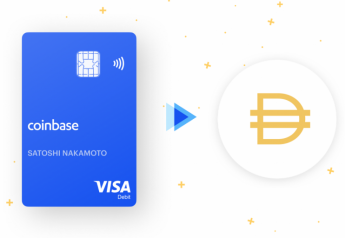While the concept of blockchain technology existed for decades, it gained popularity with the inception of bitcoin in 2008. Now, this technology has taken the world by storm. Its decentralized nature and facilitation of a peer to peer platform enable a tool that brings value to a number of industries.
In this article, we are going to understand the value that blockchain technology brings to a concept called tokenization. In addition to this, how this concept, that started as an idea, transformed into a physical reality and what are the challenges that we face today!
The Concept of Tokenization

To understand tokenization, let’s consider a hypothetical example. Supposedly, you have a land that is worth $1 million. For an emergency, you need $300,000, but you don’t want to sell your whole land. But, under conventional tools, this is not possible. Either you sell your whole land, which might take some time, or you arrange the money you need from somewhere else.
Hence comes tokenization. Through this tool, you can divide your $1 million worth land into 1 million shares, wherein each share is 1% of your property. But how do you do that? Well, this where the concept of blockchain technology comes!
Tokenization with Blockchain Technology
The idea of tokenizing physical parts into its equivalent digital counterparts has existed for a long time. Blockchain became a medium to execute that idea into a reality.
Blockchain enables an algorithm, a programmable software, that raises and defines the right of tokens. Each factor of individual tokens like rights, percentage, value, denomination, etc is defined on a smart contract that is written on the top of a blockchain platform like ethereum. The smart contract is the algorithm that facilitates raising tokens, each one defined according to its specified parameters.
These tokens are known as security tokens and each one is backed by the underlying asset. In other words, the value of token increases proportionately and with a rise in the asset’s value and vice-versa.
They are stored on a digital ledger that records each interaction performed on the asset or fraction of the asset. Furthermore, blockchain allows a digitized platform to buy and sell security tokens similar to trading on stock markets. However, blockchain-enabled platforms facilitate trading on global markets round the clock without any limitations on geography.
Benefits of Blockchain in Tokenized Assets
The blockchain platform is explored for the tokenization of assets due to multiple advantages.
- Transparency- The data stored on a blockchain ledger is transparent across the entire network. Furthermore, each transaction made on the property is recorded on the ledger, which can be viewed by anyone present on the blockchain network.
- Intermediaries- The platforms facilitating the tokenization of real estate space allow investors to directly interact with each other. Additionally, the charge levied by such platforms is almost negligible.
- Record-Keeping- Blockchain records each document, data, and transaction made using security tokens and stores it permanently on an immutable ledger. This further enables defined rights and identity over each token without the possibility of fraud.
- Secure Trading- The inherent property of blockchain makes it extremely secure to buy and sell digital tokens on a global digital platform.
Distribution- smart contracts raised on a blockchain platform allow tokens to be distributed in proportion to the investments. This further facilitates the easy distribution of passive income, rental agreements, debt on the property, etc equivalent to the invested share.
The First Tokenized Space

The idea of blockchain-based tokenized real estate space has already turned into a reality. In 2018, a parking garage project was successfully tokenized. Investors from 8 different countries bought security tokens in a process that lasted 16 days. Moreover, as many as 19 investors now share one space through fractional ownership.
Each share of digital property is managed through a separate smart contract that is further raised on the blockchain. Hundreds or even thousands of investors can share one property through the process of tokenization.
Challenges of Tokenization
Although tokenization has attracted the interest of investors and attained a small degree of success, the concept is still at a nascent stage. There are a number of challenges that still exist before it can be adopted at an institutional level.
Awareness
For this industry to have mass adoption, the idea needs to be implemented at an institutional level. However, there is very low awareness among people on blockchain or tokenization. To make people aware of the advantages in tokenizing will be a challenge.
Regulatory Framework
There is a lack of proper regulatory structure in place for tokenizing any kind of asset. Buying or selling digital tokens that actually represent real estate assets at a global scale requires a legal structure to flourish. Moreover, it would require the regulatory framework on an international scale to maximize its potential.
Scalability
One of the biggest challenges to blockchain pertains to the scalable infrastructure. As the technology is still at an early stage, its full-scale potential is yet to be realized. This directly impacts the scalable factor for tokenization as its very foundation lies on the blockchain.
The Future of Tokenization
Real estate is one of the assets that can be tokenized. Multiple assets including financial instruments are considered for tokenizing so as to generate value from the smallest fraction of parts. Even the large corporations have joined this space of tokenizing different kinds of assets.
Particularly for real estate, this industry holds a bundle of promise.
 English
English  French
French 

